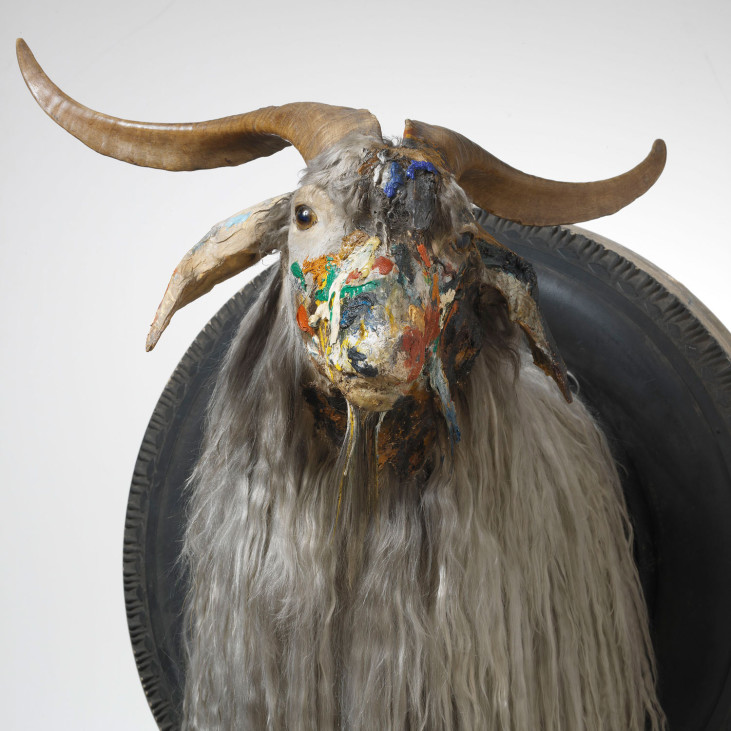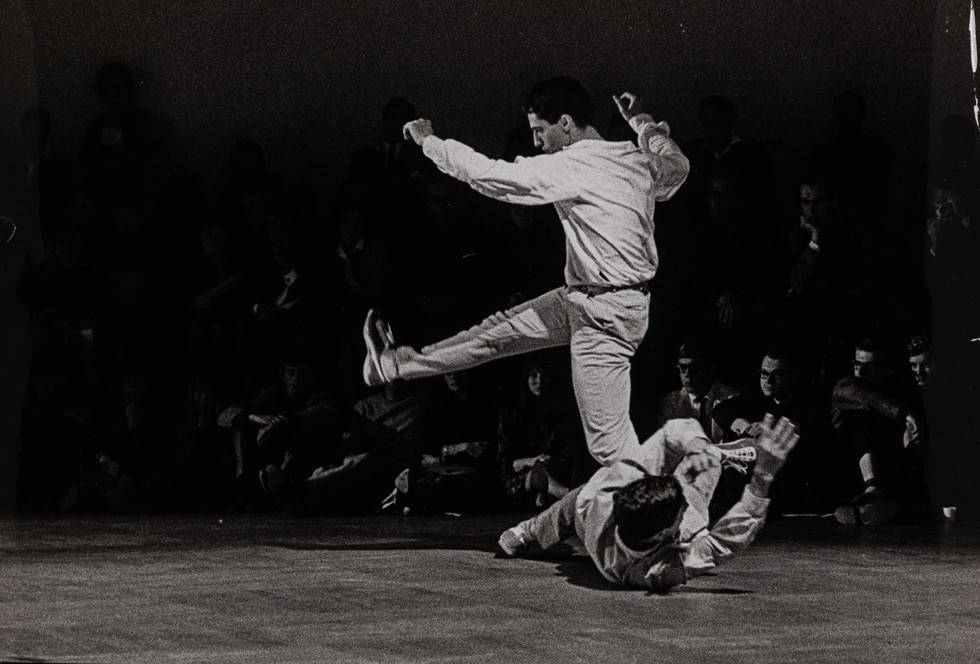
Steve Paxton and Robert Rauschenberg in “Jag vill gärna telefonera", 5 New York Evenings, 1964 Photo: Hans Malmberg/Moderna Museet
Performance: Jag vill gärna telefonera
4.10 2025
Stockholm
“Jag vill gärna telefonera” (I Would Like to Make a Phone Call) was created in 1964 by dancer and choreographer Steve Paxton (1939-2024) and Robert Rauschenberg (1925–2008). The performance reconstructed by Stephen Petronio and Randy Warshaw in 1982, is now being interpreted by Ryan Pliss and Nicholas Sciscione from the Petronio Projects in connection with the symposium “Robert Rauschenberg and Surrealism”, part of Rauschenberg100 — throughout 2025, Robert Rauschenberg’s significant artistic legacy will be celebrated worldwide.
Performance
Petronio Projects reconstructions of “Jag vill gärna telefonera”
Date
Saturday 4 October 2025
Time
12, 14, 16
Place
I the Exhibition “The Subterranean Sky: Surrealism in the Moderna Museet Collection“, floor 4
Price
Free admission, no pre-registration required.
Contact: Alexander Kateb, Moderna Museet
In 1964, Moderna Museet and Fylkingen jointly organised five New York evenings with ballet, concerts and happenings. Stockholm was visited by the Merce Cunningham Dance Company with John Cage, David Tudor, Yvonne Rainer, Robert Morris and Robert Rauschenberg. Between 1961 and 1965, Steve Paxton toured as a dancer in the Merce Cunningham Dance Company. During that time he also made his own choreographic work and collaborated with Robert Rauschenberg, the company’s lighting, set, and costume designer.
For Five New York Evenings the two premiered “Jag vill gärna telefonera” (I Would Like to Make a Phone Call), in which they interpreted a collage of mostly sports photographs by mimicking each pose while freely linking the images through their physical movement and contact.
The work anticipates Contact Improvisation—a collaborative movement practice Paxton developed in his 1972 performance “Magnesium” in which participants use touch rather than sight to generate movement together. In 1982, Paxton gave the score for “Jag vill gärna telefonera” to his students Stephen Petronio and Randy Warshaw. For the performance at Moderna Museet 3–4 October, Ryan Pliss and Nicholas Sciscione of Petronio Projects will interpret the 1982 version.
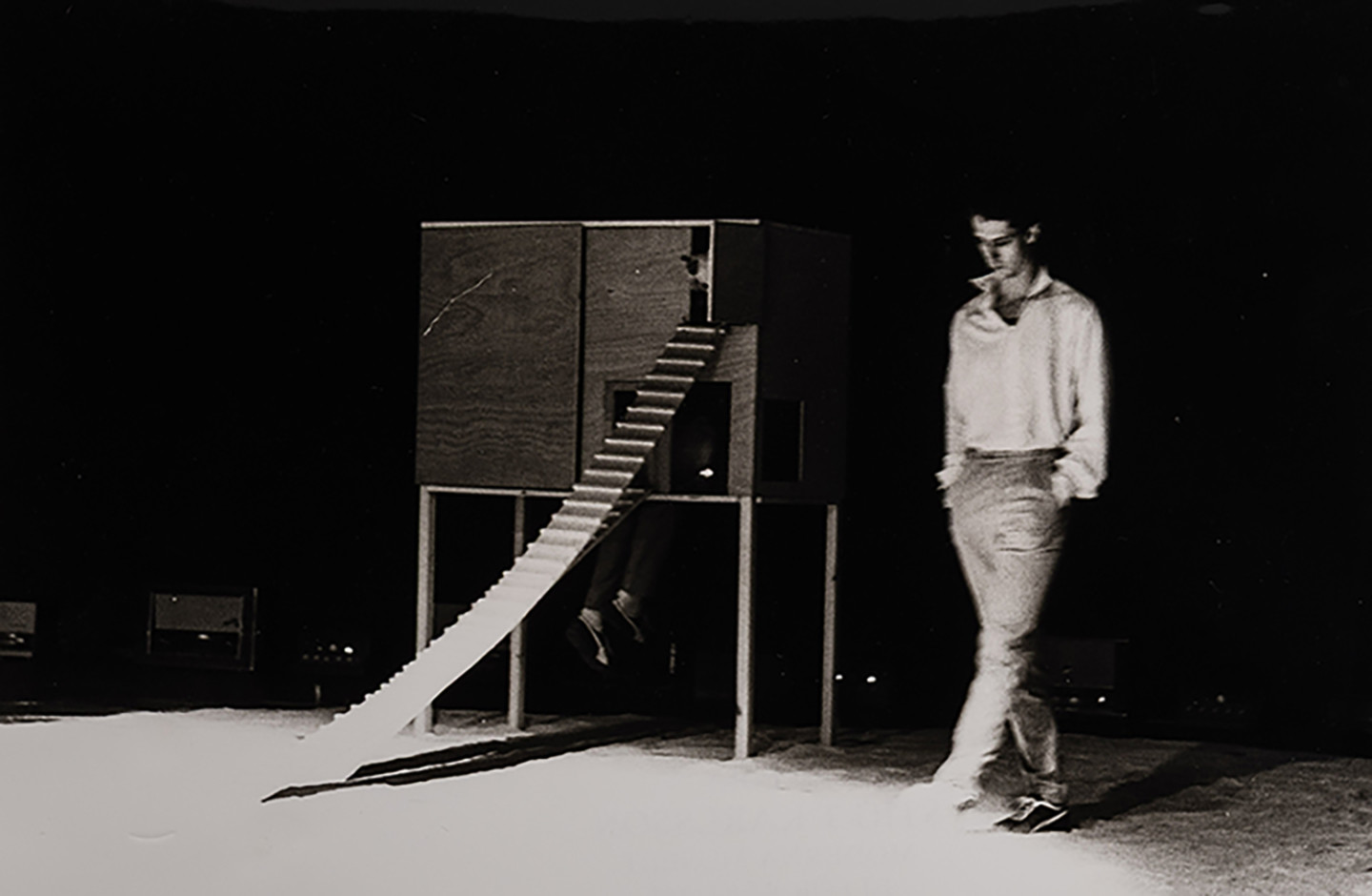
Ryan Pliss
Ryan Pliss is a dance artist based in Nancy, France, originally from Ithaca, New York. He trained at De Amsterdamse Hogeschool voor de Kunsten and received a BFA in Dance Performance from the Conservatory of Dance (COD) at SUNY Purchase. Pliss has had the pleasure of touring across North America and throughout Europe performing the works of renowned choreographers such as Merce Cunningham, Trisha Brown, Steve Paxton, Johannes Wieland, and Marie Chouinard. He is a Cunningham Technique® teacher recognized by The Merce Cunningham Trust and has taught on its behalf as well as at Cornell University’s Department of Performing and Media Arts and the COD at SUNY Purchase. He has been a member of the Stephen Petronio Company since 2017.
Nicholas Sciscione
Nicholas Sciscione was born and raised in Elizabeth, NJ. He graduated magna cum laude with a BFA in Dance from Mason Gross School of the Arts at Rutgers University. Sciscione has worked with Joshua Beamish, Kyle Marshall Choreography, and 10 Hairy Legs. He is a grateful student of Susan Klein and the Klein Technique. Sciscione joined Stephen Petronio Company in 2011 and was Assistant to the Artistic Director from 2016 to 2024. He was a 2017 NY New York Dance and Performance (Bessie) Award nominee.
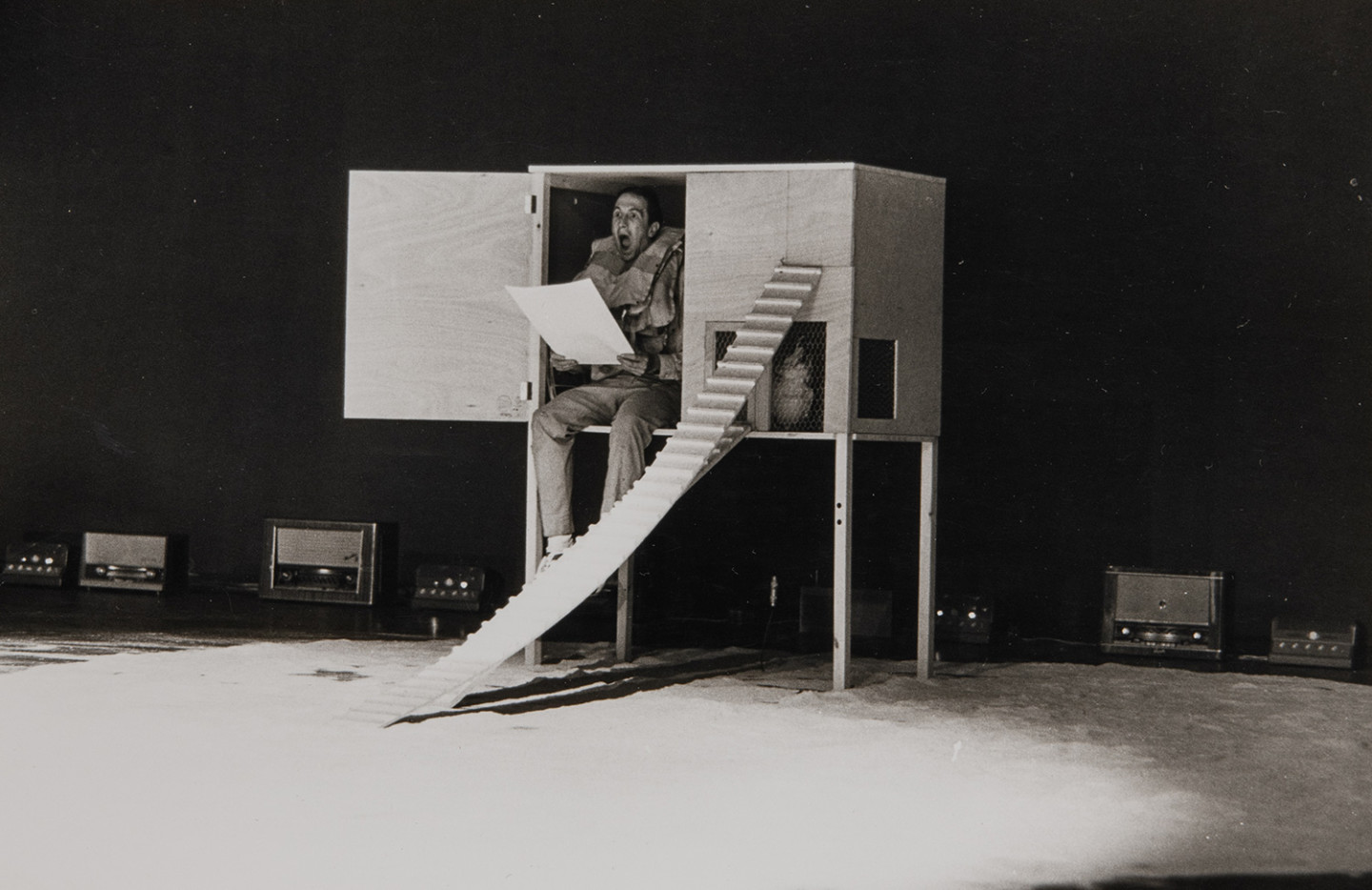
Steve Paxton
Dancer, improviser, and choreographer Steve Paxton (1939–2024) was a radical and influential movement explorer and thinker in the field of postmodern dance. Born in Arizona, he first trained in gymnastics and later expanded his practice to modern dance, ballet, yoga, and martial arts. He danced with the José Limón Company in 1959 and with Merce Cunningham from 1961 to 1964 before becoming a founding member of Judson Dance Theater and Grand Union, legendary collectives that reshaped contemporary dance.
In 1972, Paxton developed Contact Improvisation, an open-ended form of partner movement exploration that continues to be practiced globally. He coedited Contact Quarterly (1975–2022), helped produce documentaries on Contact Improvisation, and published Material for the Spine (2008) and Gravity (2018). His filmed solo to Bach’s Goldberg Variations (1992) remains iconic.
Recognitions include the Venice Biennale Golden Lion (2014), the NY Bessie Award (2015), and the United States Artists Award (2017).
Stephen Petronio
Stephen Petronio is recognized as one of the leading dance-makers of his generation. For over four decades, he has developed a singular movement language that explores the intuitive and complex possibilities of the body in relation to shifting cultural contexts. He is a graduate of Hampshire College, an early student of Steve Paxton, and was the first male dancer of the Trisha Brown Dance Company, where he danced from 1979 to 1986.
Petronio has received numerous honors, including a John Simon Guggenheim Fellowship, a New York Dance and Performance “Bessie” Award, and a 2015 Doris Duke Performing Artist Award, as well as grants from the Foundation for Contemporary Performance Arts and the New York Foundation for the Arts.
In 2014, Petronio conceived an ongoing initiative, Bloodlines, to honor the experimental Judson pioneers who have inspired him and Bloodlines(future), to more equitably support the next generation of dancers and choreographers in this artistic lineage.
Founded in 1984, Stephen Petronio Company has toured to more than 40 countries and performed 24 celebrated seasons at The Joyce Theater in New York. The Company has been commissioned by major festivals and presenters across Europe and the U.S. In 2017, it completed a five-week DanceMotionUSA residency in Southeast Asia. The Company’s historic final season is in 2025.
Curator: Lena Essling, Moderna Museet
Symposium and Performance realized on the occasion of
Rauschenberg100, with support from the Robert Rauschenberg Foundation
Courtesy of the Steve Paxton Papers
Department of Culture and Aesthetics, Stockholm University
Robert Rauschenberg and Surrealism
Experience Robert Rauschenberg’s iconic work through the lens of Surrealism. The symposium “Robert Rauschenberg and Surrealism” marks the …
Symposium and performance
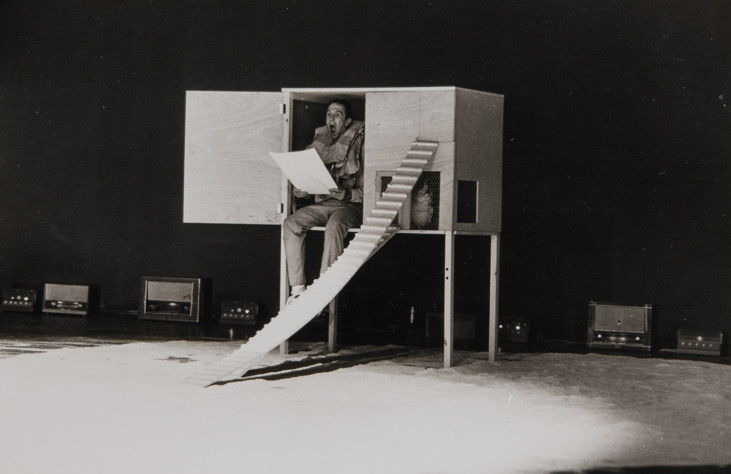
Become a Member
Come as often as you like! Purchase a membership in Klubb Moderna and enjoy free entry to Moderna Museet’s collection and all exhibitions. You can …
Klubb Moderna
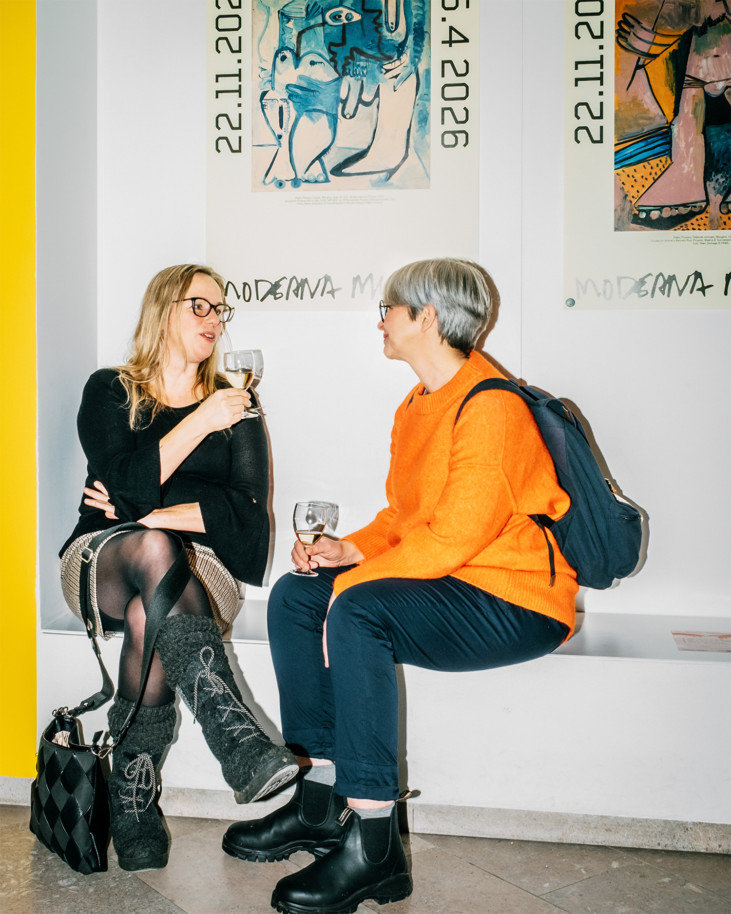
Newsletter
Subscribe to our newsletter! Get the latest news about Moderna Museet directly to you by e-mail. …
Newsletter

Monogram
Robert Rauschenberg’s iconic work “Monogram” is now exhibited in The Study Gallery. Experience our world-famous goat alongside other works and …
Robert Rauschenberg and the Moderna Museet Collection
